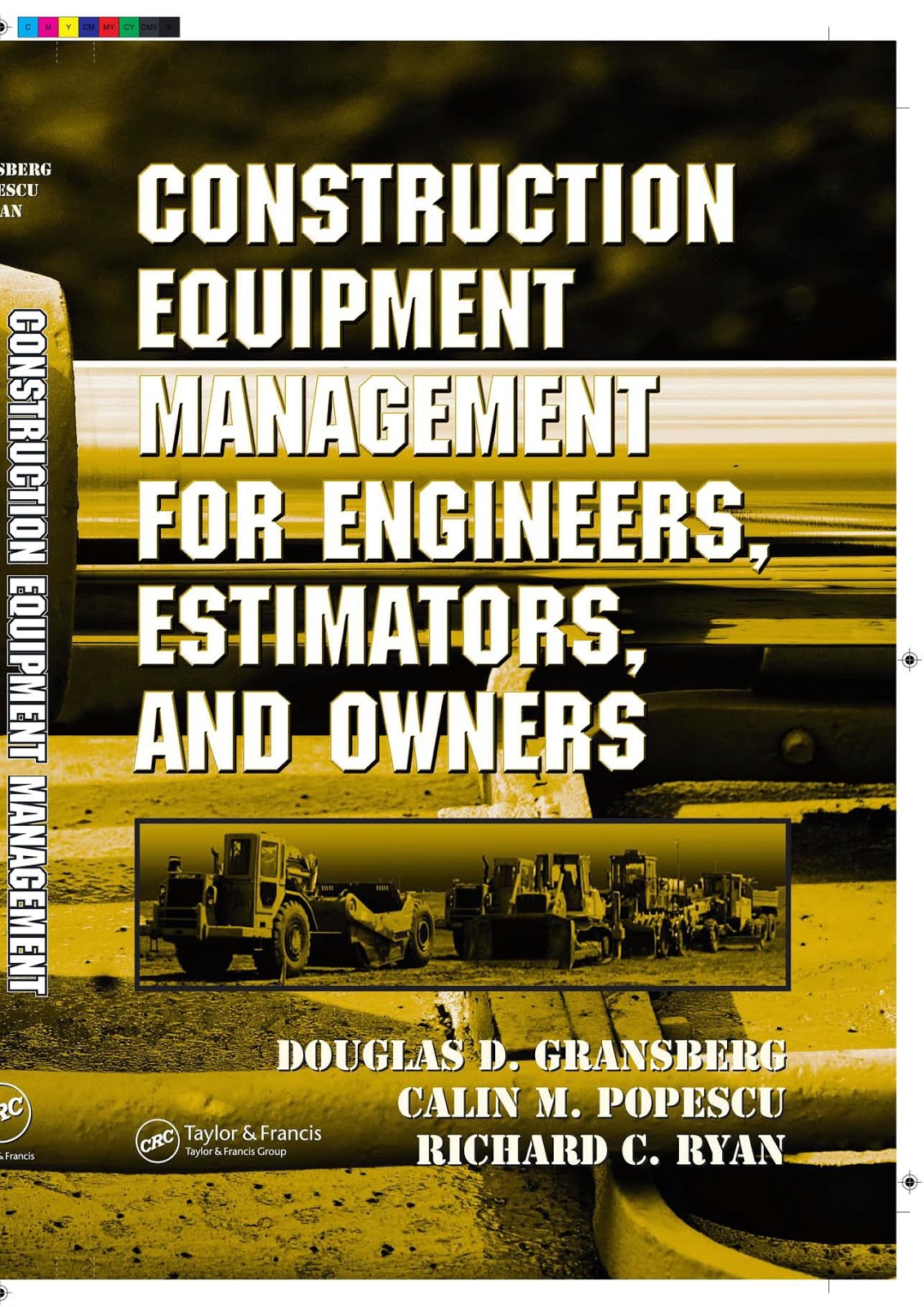Construction Equipment Management for Engineers, Estimators, and Owners is intended to be a reference book for construction project managers, estimators, construction equipment fleet managers, and professional engineers. The book also contains information relevant to both the public and private sectors. It contains a great deal of ‘‘hands-on, how-to’’ information about equipment management based on the authors’ personal construction experiences throughout the world. It is written as a guide for individuals who need to estimate the cost of equipment on a given project and do not have data at their fingertips because their routine business does not involve a lot of equipment-related construction. The authors also hope that their book will be useful to the public agency equipment manager whose need is to minimize equipment costs rather than to maximize the profit earned by the equipment.
The book is useful to all parties in the architecture, engineering, and construction industries as well as to project owners. The first chapter describes the evolution of construction equipment and serves to set the stage for the following chapters that provide specific up-todate information on the state of art in the area. The chapters on estimating equipment ownership and operating costs and determining economic life and replacement policy will be of great value to construction estimators. The chapters on determining the optimum mix of equipment and estimating the equipment productivity show the estimator how to maximize the profit of an equipment-intensive construction project. The chapter on scheduling demonstrates how to convert a linear schedule into a precedence diagram for use in a project that has a mandated scheduling methodology. This information has not been published before to the best of our knowledge and demonstrates to the equipment manager how to ensure that a production-driven, equipment-intensive project can be scheduled to achieve target production rates and hence target equipment-related unit costs and profits.
The book also shows managers and engineers how to avoid making costly common mistakes during project equipment selection. It contains a matrix that will help the novice equipment manager select the proper piece of equipment based on the requirements of the project. It is full of detailed examples of the types of calculations made to allow both public and private equipment-owning organizations to determine an optimum equipment utilization plan for any project regardless of their levels of experience. Finally, the equipment safety
chapter describes how to develop an Occupational Safety and Health Administration (OSHA) job safety analysis for an equipment-intensive project, thus making this onerous and essential task easier for the equipment manager.
This book is the brainchild of Dr. Calin Popescu of the University of Texas and flows from an early work undertaken to support his graduate civil engineering class in construction equipment management. Dr. Popescu’s focus was on equipment used for heavy-civil projects. Professor Richard Ryan of the University of Oklahoma blended much of his work on managing construction equipment in building construction for his construction science undergraduate class on construction equipment into Dr. Popescu’s outline to produce a
reference that for the first time treats both horizontal and vertical construction projects. Dr. Doug Gransberg added his research on optimizing equipment fleet size and composition as well as his experience in applying engineering economics and simulations to produce a comprehensive treatise on this subject that ranges from the rigorous mathematical analysis of equipment operations to the pragmatic discussion of the equipment maintenance programs needed to guarantee the production assumed in a cost estimate. The authors hope that the combination of both the analytical and practical aspects will result in a reference document that will be of value to a wide range of individuals and organizations within the architecture, engineering, and construction industries.
The book also shows managers and engineers how to avoid making costly common mistakes during project equipment selection. It contains a matrix that will help the novice equipment manager select the proper piece of equipment based on the requirements of the project. It is full of detailed examples of the types of calculations made to allow both public and private equipment-owning organizations to determine an optimum equipment utilization plan for any project regardless of their levels of experience. Finally, the equipment safety
chapter describes how to develop an Occupational Safety and Health Administration (OSHA) job safety analysis for an equipment-intensive project, thus making this onerous and essential task easier for the equipment manager.
This book is the brainchild of Dr. Calin Popescu of the University of Texas and flows from an early work undertaken to support his graduate civil engineering class in construction equipment management. Dr. Popescu’s focus was on equipment used for heavy-civil projects. Professor Richard Ryan of the University of Oklahoma blended much of his work on managing construction equipment in building construction for his construction science undergraduate class on construction equipment into Dr. Popescu’s outline to produce a
reference that for the first time treats both horizontal and vertical construction projects. Dr. Doug Gransberg added his research on optimizing equipment fleet size and composition as well as his experience in applying engineering economics and simulations to produce a comprehensive treatise on this subject that ranges from the rigorous mathematical analysis of equipment operations to the pragmatic discussion of the equipment maintenance programs needed to guarantee the production assumed in a cost estimate. The authors hope that the combination of both the analytical and practical aspects will result in a reference document that will be of value to a wide range of individuals and organizations within the architecture, engineering, and construction industries.

